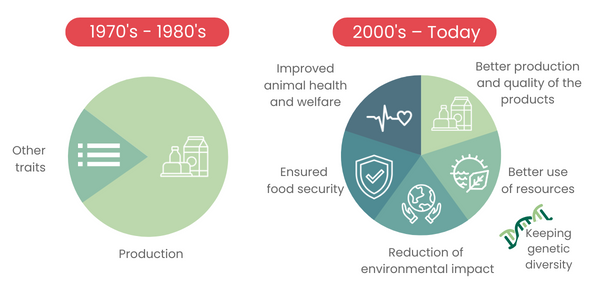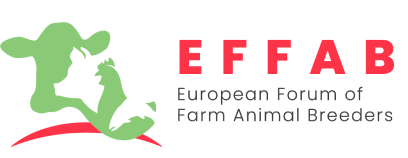Responsible and
balanced breeding
Balanced and responsible breeding means finding a sustainable compromise for the people, the planet, and for farmed animals between traits related to the health and welfare of animals, their environmental impacts, and the quality and quantity of production (milk, meat, fish meat and eggs) whilst keeping genetic diversity.
Currently, pigs and poultry only need half of the feed needed 40 years ago. Other examples of breeding elements are: improving robustness and longevity for dairy, leg strength in both pigs and poultry, improving positive behaviour, osteoporosis in laying hens, or disease resistance in aquaculture.

As a commitment to responsible and balanced breeding, EFFAB members adopt Code EFABAR, the code of good practices for animal breeding. The code is based around 6 pillars from animal health and welfare to food safety and recognizes the central role of sustainability in safeguarding food security. The Code is reviewed every 3 years and the next version will be presented in 2026.
Related article

Animal Health and Welfare
Improving animal health and welfare is essential to meet society’s demands for ethical food productions, ex.: improving robustness, improving positive behavior.
Environment
Reducing the environmental footprint of food production is central to animal breeding best practices, ex.: reducing methane and ammonia emissions.
Product Quality
Product quality is a key focus for animal breeding organizations. The most appropriate animals in population are selected for key trait like leanness of meat.
Genetic Diversity
Making sure there is a high level of genetic diversity within populations is a prerequisite for responsible and balanced animal breeding programmes.
Better use of resources
Better use of resources is central to Code EFABAR and can be achieved through techniques like breeding animals with optimal feed use and increased longevity.
Food Safety and Public Health
Animal Breeding organizations work to reduce the risk of diseases being transmitted from animals to humans. By improving resistance to diseases, they reduce the use of antimicrobials and food waste.
